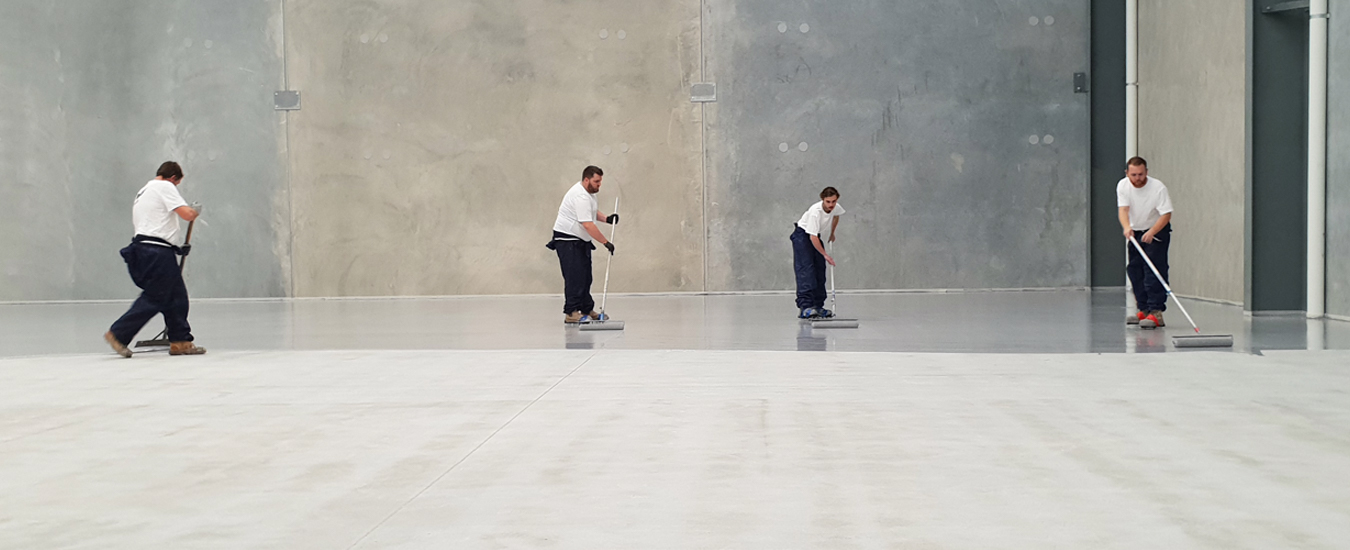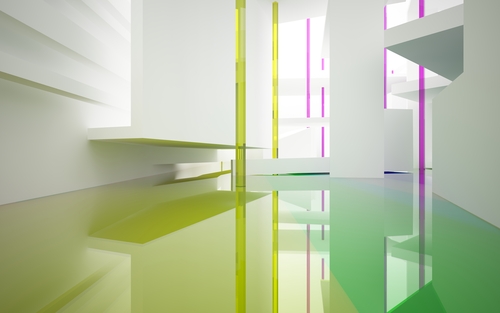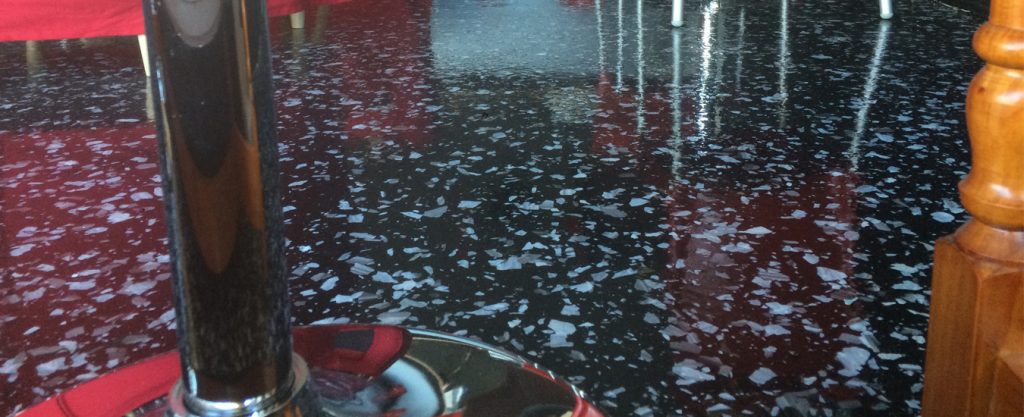What’s it all about? A Balanced View From An Experienced Applicator
Don’t believe everything you hear. As a resin flooring installer, I have over 15 years experience in a huge variety of concrete paints, sealers, resins, cements and resurfacing systems. Polyurea and Polyaspartic technology is very much a part of my company today and I source these materials from several different suppliers.
I often receive calls from people who have read radical online reviews claiming the infallibility of Polyurea, Polyaspartic or Polycuramine and wanting to know more about these ‘miracle products’. I usually hear one of two things from these customers:
– Do you install (Polyurea, Polyaspartic, or Polycuramine), because we don’t want any other product on our floor!
OR
– What’s the real story about Polyurea, Polyaspartic, or Polycuramine because it sounds too good to be true!
I’m sorry to say, but it’s an over-exaggerated sales pitch. In fact, the salesperson hasn’t just exaggerated the benefits of these products, but they have made quite derogative remarks towards industry standard products such as epoxy, polyurethane, methyl methacrylates (MMA). So the customer starts off with an unbalanced view of their options, because of a biased salesperson/supplier. There are a list of very good reasons why epoxy and polyurethane are higher on the list of common products than these three.
Hawk Concrete Floor Coatings is not in the business of profiting from creating problems. We are able to provide an unbiased view because we have in our range a number of these products, as well as a host of other resins sourced from all over the world. It makes very little difference to us whether we install Polyurea or Polyaspartic or something else – as long as you receive the right system for a competitive price. Whatever that system is will be a customised resin to suit your customised environment; there is no such thing as a ‘one-size-fits-all’ approach in this industry.
Polycuramine Doesn’t Make the Cut
Before we get into the comparisons of Polyurea and Polyaspartic, a quick note: Polycuramine was marketed heavily as a new technology product when it is in fact an epoxy. It is a hybrid epoxy but it does not have, as claimed, the best properties of epoxy, polyurethane and polyaspartic combined. It is not UV stable, scratch resistant, or cost effective. In my opinion it has been made to produce a bright attractive finish but at the cost of quality and longevity. The DIY kits that are being sold allow only for minimal film thickness, insufficient to achieve a proper floor finish. An alternative to Polycuramine designer finishes is the ERFLA Insitu Spaces. For these reasons, Polycuramine has not been included in the analysis below.
Enough chatter, let’s look at the facts.
The pros of Polyurea and Polyaspartic in comparison to other QUALITY products supplied by Hawk CFC:
- Highly flexible; greater flexural strength and ability to withstand expansion and movement in a concrete slab without breaking or delaminating.
- UV stable. Many polyurethanes and MMAs, such as Silikal GmbH are also UV stable but epoxies are not (but can be top-coated to make them stable). Some epoxy manufacturers have managed to make epoxy formulations that take a long time to discolour or break down via UV light.
- Fast Cure Times. Compared to most epoxies, Polyurea and Polyapartic resins are fast (but compared to MMA Reactive Resins from SILIKAL GmbH they are slow – see our Rapid Return to Service Resin technology).
- Provides fantastic aesthetic “depth.” Depth is the clarity and visual 3D appearance of the product. It has a clearer look compared to polyurethane, but cannot be applied as a self-leveller to get the glass-finish effect.
- Excellent gloss retention. Greater gloss retention compared to epoxy, and in my opinion greater also compared to most polyurethanes.
The cons of Polyurea and Polyaspartic in comparison to other quality products supplied by Hawk CFC:
- Adhesion is lower. There is a minimised ability of the coating to withstand the likes of hydrostatic pressure, dusting-off of the slab and other bonding issues. This drawback alone can be a serious deal-breaker because the costs of a failed floor includes down-time, moving of equipment, furniture, removal of failed floor as well as replacement costs. This can be overcome with the placement of a primer, however by the time another coat is applied, the savings associated with these systems have been lost anyway.
- Re-coatability and maintenance. With its chemical resistance properties, its low adhesion value makes for difficulty in touch-ups or maintenance of clear coats. Especially if there is flake or quartz in the film preventing sanding the surface.
SILIKAL Reactive Resins repel virtually any stain or contaminant yet will receive maintenance coats with perfect inter-coat bonding. - Film thickness is comparatively low. While the film thickness can be built higher than a polyurethane it is no match for self-levelling epoxy resin. The higher the film thickness the greater the practical abrasion resistance, and more permanent the floor.
- Unlike polyurethane, these coatings do not provide the UV blocking capability of high end polyurethanes, which actually protect the base coat epoxy and/or substrate from the effects of the sun.
- Generally, you have less options. Many high end finishes available with 100% solids epoxy resin cannot be achieved using these products.
In conclusion, the flooring industry is richer for the inclusion of Polyurea technology, but the products have not revolutionised the industry the way that some claimed they would. The advancement of technology has ensured that epoxy and polyurethane products remain the primary resin floor coatings, and are still the products to use on 9 out of 10 floors. The 1 out of 10 floor that should have Polyurea or Polyaspartic are when there is a major time constraint, financial constraints, or a slab that is subject to an unusual amount of expansion movement or cracking.
For more information and pricing, contact Hawk Concrete Floor Coatings or read further on how to obtain and understand quotes for resin floor coatings.





